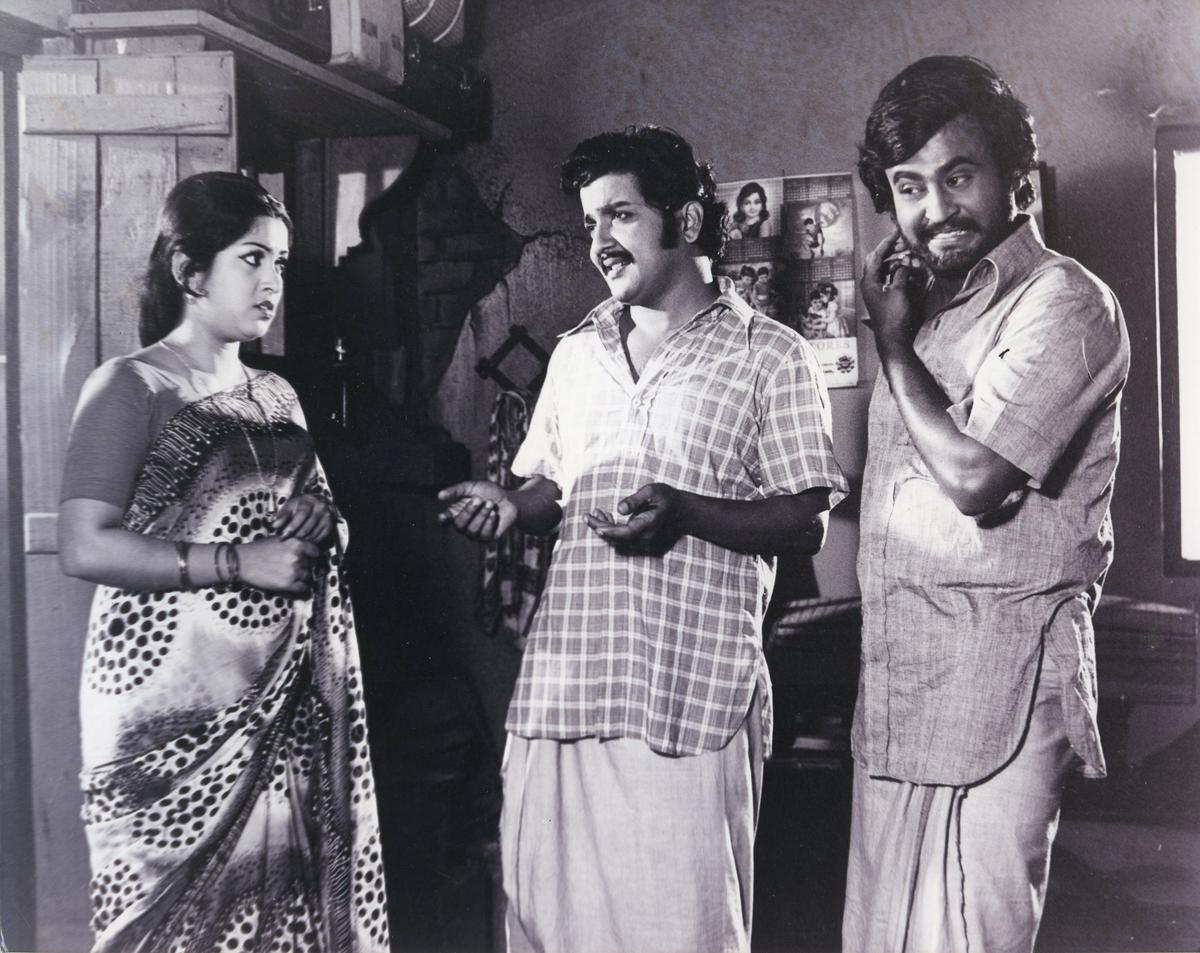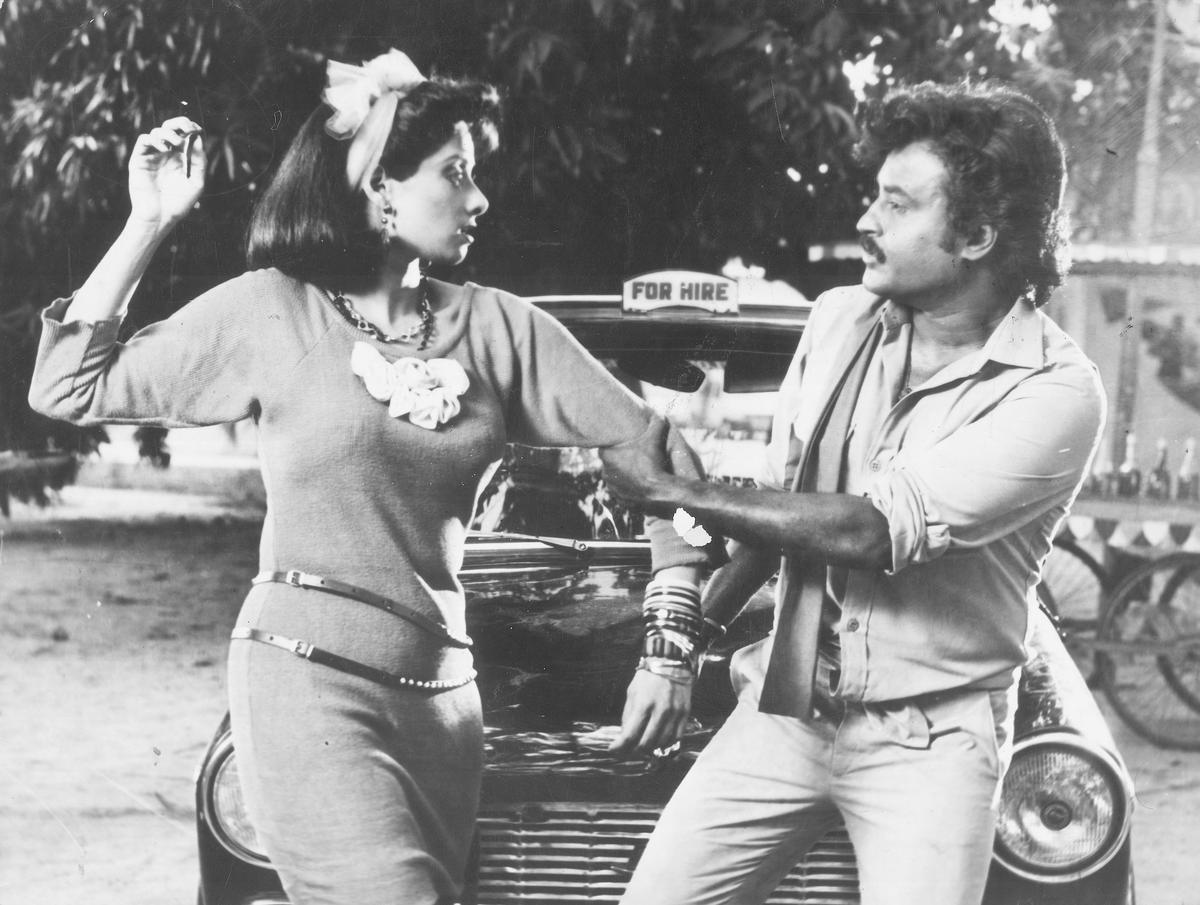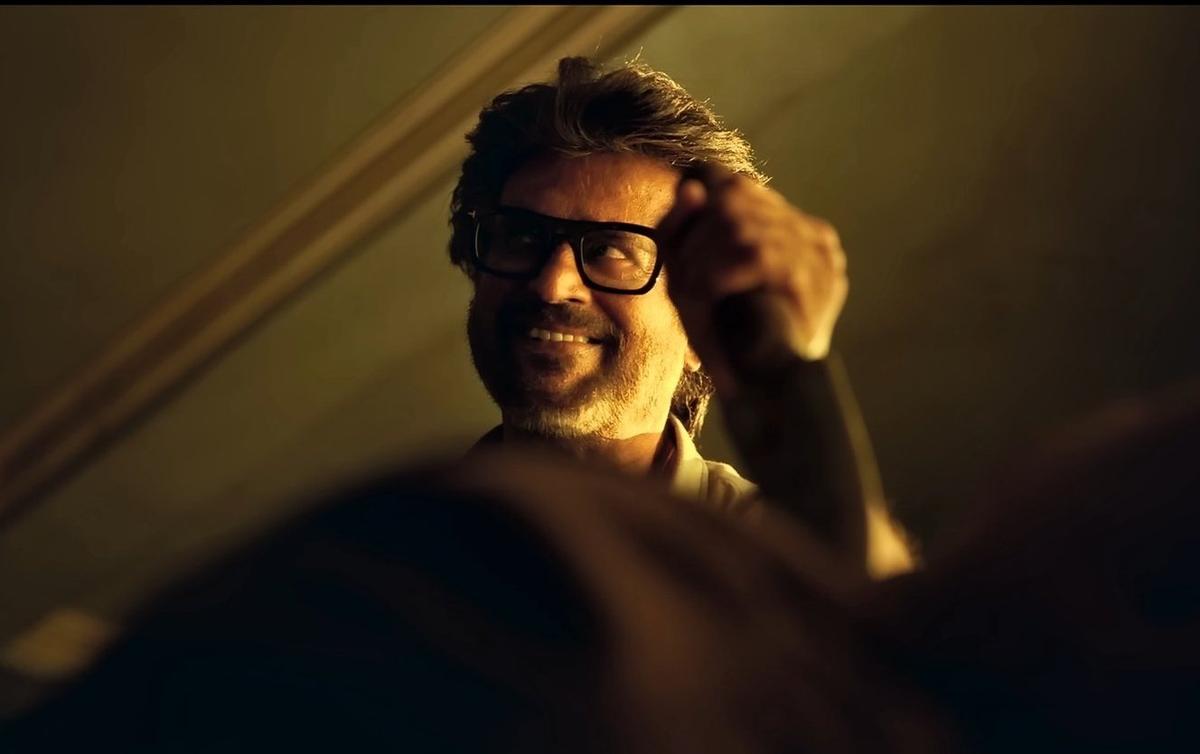What does it take to become a Superstar? Not a superstar. But the Superstar. What does it take to personify larger-than-life, to become a cornerstone in the cultural fabric of an Indian state that can no longer separate the man from the myth? From his rich-complexion and cigarette-flipping style to an international fanbase and a controversial swing at politics, Rajinikanth has grown beyond life as we know it, in an ascent to the throne that was marked by one godly quality — the magnetic charm to pull crowds to theatres, a spell that even today, 50 years since his debut, fills theatre halls in Tamil Nadu.
Everyone knows about the famed story of how Shivaji Rao Gaikwad, a bus conductor and a graduate from the Pune Film Institute, became Rajinikanth in K Balachander’s 1975 film Apoorva Raagangal. Perhaps it was the alignment of the stars that brought Shivaji in front of Balachander’s lens, but it isn’t kismet that made the legend who continues to rule all headlines. It certainly wasn’t just the hits; even a prudently sourced hit-to-flop ratio tells that a five-decade-long career in films cannot be chiselled with accurate script choices alone, but an anchored approach to adapt, to have the courage to go where the winds of time take you. In fact, ‘Rajinikanth’ is a phenomenon Shivaji aggressively brought to life by constantly adapting to the market forces.
‘Naan sonnadhayum seiven, solladhadhaiyum seiven’
He may not have had any say in being cast as a villain in the initial phase of his career, but 1979’s Bhuvana Oru Kelvi Kuri was one of the early markers of what followed for Rajinikanth in the next few years (and a career-defining collaboration with director SP Muthuraman). Although cast in supporting roles quite waywardly, films like Bairavi, Mullum Malarum, Priya, and Aarilirunthu Arubathu Varai featured the star in author-backed roles that brought out the performer in Rajini. While he had begun his action stints in the 70s, the superstar took cognisance of Amitabh Bachchan’s success with the angry-young-man narrative in the ‘70s, and Billa began Rajinikanth’s long, serious tryst with the action genre.


Sumithra, Sivakumar and Rajinikanth in a still from ‘Bhuvana Oru Kelvi Kuri?’
| Photo Credit:
HINDU PHOTO ACHIVES
ALSO READ: There’s nothing Rajini-can’t: When the Superstar flexed his acting chops
The 1980s were all about cementing his position as the most-sought-after star, and Rajini churned out an average of seven films in a year in this decade. Action entertainers and family dramas continued to fill his repertoire, with the occasional oddball comedic turns in films like Thillu Mullu and Guru Sishyan working wonders in his favour. But in the 1980s, the superstar also took a strategic step that would eventually make him a household name in India — winning over the northern Indian filmgoers. In 1983, Rajinikanth made his Bollywood debut with the slick masala actioner Andhaa Kaanoon, a remake of Vijayakanth’s film Sattam Oru Iruttarai. And Bollywood welcomed him with open arms. The southern storm took over North Indian theatres with many Hindi films, some remakes of his Tamil films (John Jani Janardhan) or other Tamil films (Dosti Dushmani), some shot simultaneously in Tamil and Hindi (Jeet Hamaari), and some were straight Hindi films (Meri Adalat, Bewafai, Asli Naqli, Hum).


Rajinikanth with Sridevi in the Hindi film “Chaal Baaz”.
| Photo Credit:
HINDU PHOTO ACHIVES
Once again, most of these Tamil and Hindi films were action dramas. But, the more surgical manoeuvres came in the 90s, when Rajinikanth solidified his stronghold over the coveted, elusive demographic — the Tamil families. The experience of working with a myriad of filmmakers in the 80s came in handy as the superstar began tailoring the formula behind the pulpy masala fiction that filmmakers of today carry as the bible of Tamil mass cinema. Take, for instance, the move to do Veera with director Suresh Krissna. As the director revealed in many interviews, any other star would follow up on a blockbuster, like their film Annaamalai, with a film like Baashha. Interestingly, Suresh had pitched Baashhaafter Annaamalai. However, the superstar insisted that they do something entirely different, like Veera, something that would temper audience expectations before doing yet another action drama like Baashha. The gamble worked, with all three performing well in theatres.
From Dharma Durai and Baashha, to Padayappa and Muthu, and Annaamalai and Arunachalam, several Rajinikanth blockbusters spelt the formula the superstar wished to follow — these films were ‘packaged’ with the right masala cinema elements, had perfected Rajinikanth’s image as the proletariat hero who rises above injustice, and found blockbusters on television due to their re-watch value. This followed well into the early 2000s, with Chandramukhiand Sivaji: The Boss, but the widening gaps between the films weren’t just signalling an upscale in film production; it was time for India’s greatest superstar to now go beyond the skies and cement his legacy.

Rajinikanth in a still from ‘Sivaji’
‘Yen vazhi, thani vazhi’
And thus began the experiments, bolstered with technological advancements in filmmaking — if not for Rajini, who else could have done an Enthiranand followed it up with a Kochadaiiyaan? He had the backing of the industry to break into new horizons. The mammoth failure of Lingaa only drove the superstar more frantic and restless as he desperately had to capture the now-elusive audience who had been quick to dismiss him as old and obsolete. Thanks to Pa Ranjith, Rajinikanth used his platform to voice for the voiceless in Kabaliand Kaala, and yet, the naysayers dismissed them as unsuccessful attempts. Meanwhile, even 2.0, while shattering box office records, couldn’t reinforce his legacy, which is when Rajini took a detour that continues to define his career — he was finally ready to test the limits of his superstardom.
In the last five to six years, Rajinikanth’s films have only grown grittier, one more serious and grounded than the other. Karthik Subbaraj’s Pettawas slick and stylish, but had surprisingly underplayed Rajini’s romance with Simran; the story was instead anchored to a gruesome revenge arc. Even in Darbar, a largely forgettable film, Rajini played a ruthless cop with anger management who brings wrath upon those who killed his daughter. Jailer, his most violent to date, has him behead men and even murder his own son. Vettaiyan, directed by TJ Gnanavel, was arguably the most sober Rajini film in a long time; an encounter specialist investigates a conspiracy in this solemn take against fake encounters.

A still from ‘Jailer’
| Photo Credit:
Sun Pictures
And so it’s a circle come true for the man who started as a villain/anti-hero in bleak narratives. Even a failure like Annaatthe reinstated that he could no longer just saunter around heroines, drop a punchline and waltz through action scenes in slow-motion — the youth audiences of today want more from the man who could pack a screen even with an A-certificate film. Relentless, realistic action films are, after all, the trend today for big Tamil stars. They have enough filmmakers and heroes to do the family-friendly commercial masala flicks. A few years ago, you wouldn’t expect the Rajinikanth to decapitate a man on screen. The industry forces would have compelled him to stay in the family-friendly lane. But this isn’t your wildfire to contain. With blood splattered all over his face, he now smiles at you with death-bringing eyes to say that there’s been a change in power. The superstar is now in charge, and Coolie — his first A-certificate film in 36 years, directed by a filmmaker with a penchant for fake blood and guns — would make it clear that Rajinikanth is the quintessential superstar who no longer needs to play safe to win over all. He is and he will be the superstar for all age groups, aarilirundhu aruvadhu varai.
Published – August 13, 2025 07:00 am IST



